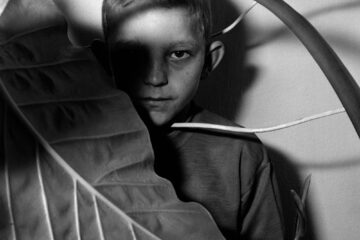The Buchkunst Berlin Gallery is celebrating the tenth anniversary of Photo Basel 2025 with a selection of international artistic photography. The magical models of reality presented by the gallery this year range from the intoxicating worlds of color in the images of Japanese photographer Yasuhiro Ogawa, who captivated Basel audiences last year, to the surreal-feminist landscapes of Bára Prášilová, which we are presenting for the first time with our gallery, from Michael Wolf’s Hong Kong photographs and the iconic Alpine images of southern German photographer Olaf Unverzahrt to Thomas Gust’s abstract, color-reworked Japan series. Incidentally, it’s also a small anniversary for us: this is our fifth participation in Photo Basel!
The artists Bára Prášilová, Olaf Unverzart, Yasuhiro Ogawa and Thomas Gust will be present during the fair and we look forward to your visit at Photo Basel from June 17 to 22, 2025, and a discussion with them.
+++ We have a limited number of VIP tickets for Photo Basel, valid for the entire duration of the fair, which we are happy to make available to the gallery’s collectors. We would be delighted if you could visit us – if you are interested, please contact us via email: info@buchkunst-berlin.de +++
We look forward to seeing you again this year in Basel!
Address:
Volkshaus Basel
Rebgasse 12-14,
4058 Basel,
Switzerland
Booth: Ground floor, number 11
Dates:
Opening hours: Monday (June 16, 2025): “Private View” (with VIP invitation only)
Tuesday–Saturday (June 17–21, 2025): 12 p.m.–8 p.m.
Sunday (June 22, 2025): 12 p.m.–6 p.m.
» TO PHOTO BASEL
Would you like to learn more about the limited editions of the series we are presenting at Photo Basel? If you are interested, please send us an email to info@buchkunst-berlin.de or call us directly at +49 30 21802540. We look forward to speaking with you.
BUCHKUNST BERLIN GALLERY PRESENTS AT PHOTO BASEL 2025
_
Bára Prášilová
Bára Prášilová (*1979) creates surreal worlds in her photographs, balancing on the border between beauty and strangeness, between realism and fictional scenarios, achieving a heightened degree of authenticity through her precise execution. In the resulting worlds, she explores strong female images and questions social role distributions, with the poetic staging also referencing the tradition of Eastern European modernism and transforming it into a contemporary approach. Prášilová has exhibited worldwide and internationally, including in Paris, France, Vienna, Austria, Melbourne, Australia, and the United Arab Emirates. She has received numerous awards, including the title of “Czech Grand Design Photographer of the Year” several times (2009, 2011), the Hasselblad Masters Award (2014) and the prestigious Clio Award in 2019. Her artworks are in several private art collections and in the permanent collection of the state institution of the Czech Republic.
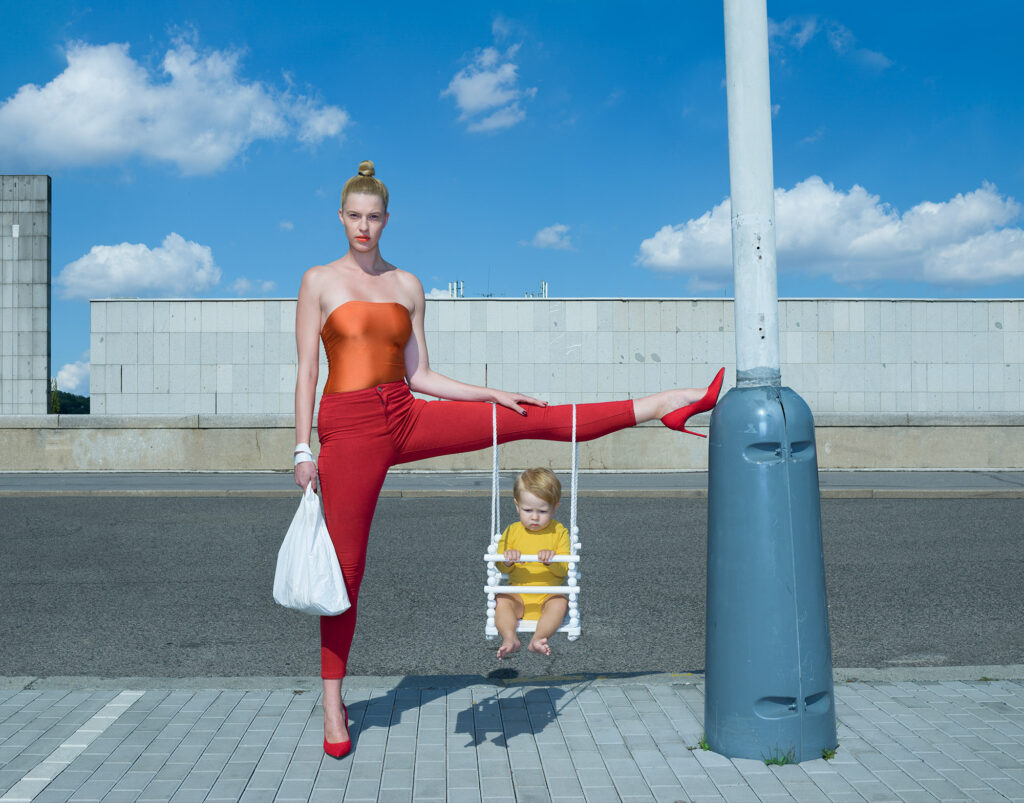
_
Michael Wolf
The award-winning German photographer Michael Wolf (*1954–†2019) documented urban life in the world’s largest cities such as Hong Kong, Chicago, Tokyo, and Paris using large-format topographical series, which can be read as a metaphor for the question of our lives in densely populated metropolises. Wolf initially worked as a successful photojournalist before becoming an art photographer in 2003. His works were awarded first prize at the World Press Photo Award in 2005 and 2010, and his works are featured in the permanent collections of leading museums such as the Metropolitan Museum of Art in New York, the Folkwang Museum in Essen, the Rijksmuseum in Amsterdam, and Museum M+ in Hong Kong. Michael Wolf has published more than 30 photo books about urban life.
Michael Wolf’s MFT (My Favorite Things) series showcases a variety of creative and informal solutions that Hong Kong residents have developed to cope with the density of their urban life. From improvised seating to drying gloves, coat hangers, plastic bags, and even lost laundry, each image reveals the ingenuity of the people living in the megacity’s often overlooked “back alleys.” Wolf was deeply impressed by people’s ability to find use and purpose in these seemingly functionally empty spaces and to creatively utilize them.
By assembling selected photographs into tableaux that interact with each other in shapes and colors, an expanded visual structure is created that can be read as a metaphor for the city of Hong Kong and its back alleys.
As an “anthropologist with a camera,” Wolf created his unique series at a time when Hong Kong was changing rapidly and its backstreets were becoming increasingly clean and empty. His photographs preserve the memory of a vibrant, dynamic city and its inhabitants, who find remarkable solutions for their everyday lives in the simplicity of everyday life.
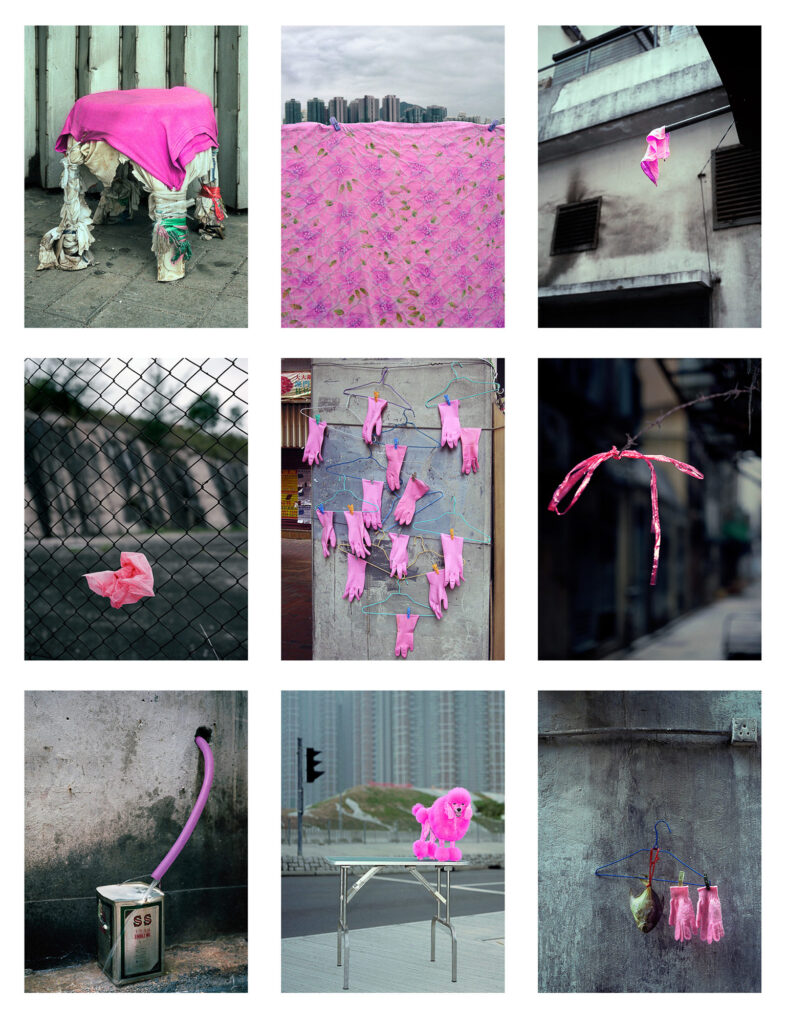
_
Olaf Unverzart
Olaf Unverzart (*1972) often documents various aspects of human influence on the design and transformation of territories and habitats in his photographic series. In his acclaimed series STRATA (2002-2014), he presented a photographic inventory of the Alps beyond the peaks and tourist attractions. These large-format works, which take up the tradition of alpine photography of the 19th and early 20th centuries and extend it into our time, offer new perspectives on strata, glaciers, structures, and walls. In his images, this majestic landscape offers a dialogue that addresses questions of change and destruction in nature and is more relevant today than ever before. Unverzart approaches the mountains with effort, patience, and humility, with the intention of allowing their presence to take effect and revealing it in his images. Olaf Unverzart has just published his twelfth monograph and has held various teaching positions. His work has been presented in numerous national and international solo exhibitions and is included in relevant photographic collections. Most recently, he participated in the exhibition “Hello Nature” at the Germanisches Nationalmuseum, Nuremberg.
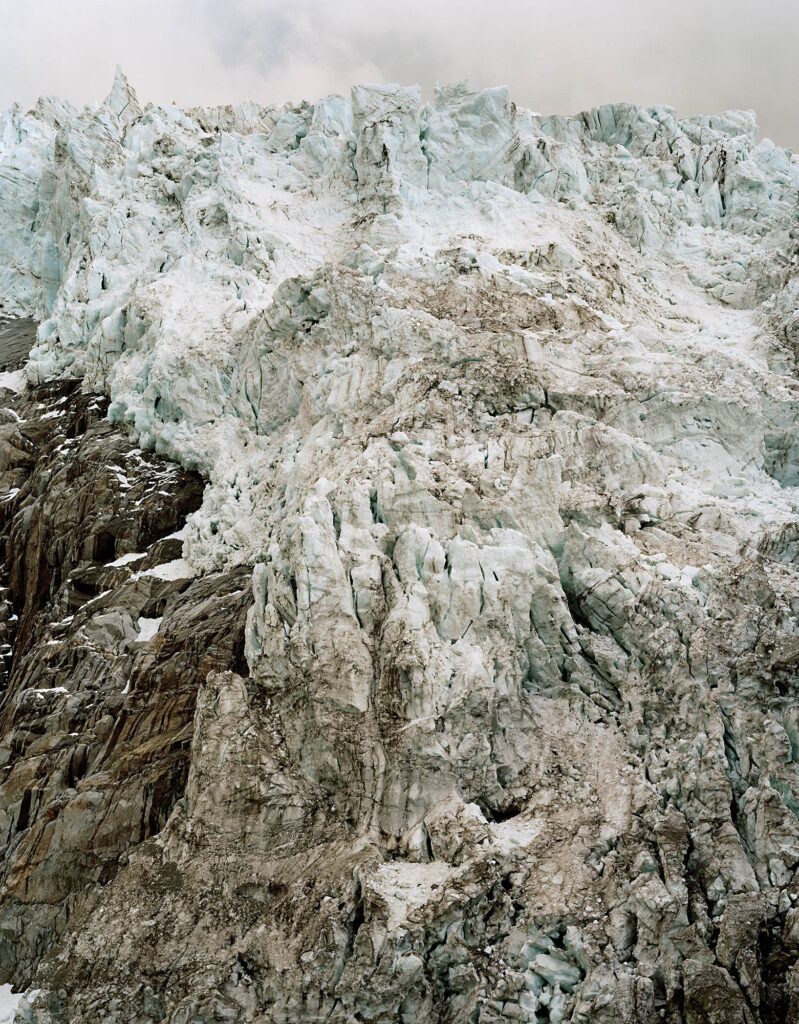
_
Thomas Gust
Thomas Gust (*1972) explores themes such as memory, history, and urban life through a distinctive blend of photography and painting. This process transforms his images while simultaneously preserving their photographic essence and expanding the boundaries of the medium.
During his stay in Japan in 2025, the idea for a series was born that juxtaposes iconic Japanese pictorial elements, such as the cherry blossom, with portraits of the late 19th century and alters the prints through manual intervention using painting techniques.
In the Costumes series, staged studio portraits of geisha models are reworked using painting, thus transferring them into the present and into a new artistic context. In everyday Japanese life, a geisha stands for tradition, grace, and the complexity of human relationships. She is a mediator of cultural techniques. The portraits of women reworked here originally come from Japanese portrait studios of the late 19th century, where they were produced in large editions as so-called “travel photographs.” The images were offered as landscapes (views) and portraits (costumes). Through the colorful, overpainting intervention, a language of abstraction is developed, transforming the traditional photographic image into a new and contemporary presence.
The cherry blossoms in the series Cherry Blossoms, Tokyo, which bloom in delicate hues, stand in stark contrast to the calmer, almost melancholic presence of the female portraits in the series Costumes. The blossoms, shot at night and at dawn, glow almost graphically against the darkness, against the cool gray of morning. In Japanese culture, the cherry blossom is a powerful symbol of the transience of life. They bloom only for a short time, reminding us of the preciousness of the moment, and their transience alludes to death. The images, with their contemplative attitude and symbolic transience, can be understood as contemporary landscapes, as views.
Thomas Gust, Cherry Blossoms, Tokyo, 2025, #4 & Costumes, Tokyo, 2025, #4
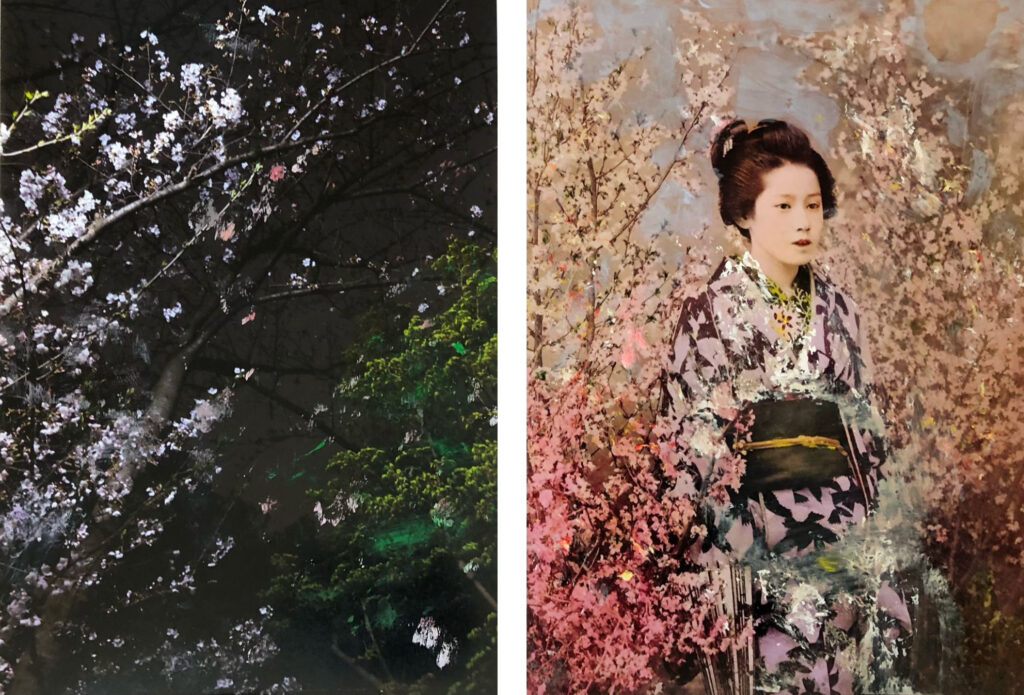
_
Yasuhiro Ogawa
Yasuhiro Ogawa (*1968) is considered one of the new and powerful voices in Japanese photography. His works operate in a realm that embraces the classic motifs and contemplative attitude of Japanese landscape photography and combines them with contemporary photographic techniques, such as abstract compositions, unusual perspectives, and blurred images. His almost cinematic images transport the viewer to another reality, transforming our environment into dreamscapes.
In his new series “Lost in Kyoto,” the photographer explores fundamental concepts of life and human community, developing a language of objects and symbols close to Zen Buddhism. Hand-polished filters abstract individual photographs and develop a texture that drapes itself over reality like a veil.
Through his unique perspectives and emotional depth, Yasuhiro Ogawa captures the beauty and timeless mystery of this place. The artist has received awards including the Taiyo Award and the Newcomer Award from the Photographic Society of Japan for his images and is considered one of Japan’s most important contemporary photographers.




